I honestly can't remember a time when I did not crave the ability to identify all the wildlife I encountered. Ever since I was a young girl, I have admired people who are so familiar with their surroundings that they can name virtually every species they pass--flora, fauna, or otherwise. Particularly interesting to me are birds (because they are my favorite animals) and wildflowers (because they are pretty and, often, edible and/or medicinal). When I was younger, I had no idea how many organisms there were in the world--not to mention how many of them looked
exactly alike--and so it came as quite a blow to realize just how much work it would take for me to make any headway at learning names (...and habitats, morphologies, distinguishing characteristics, distributions, and so on).
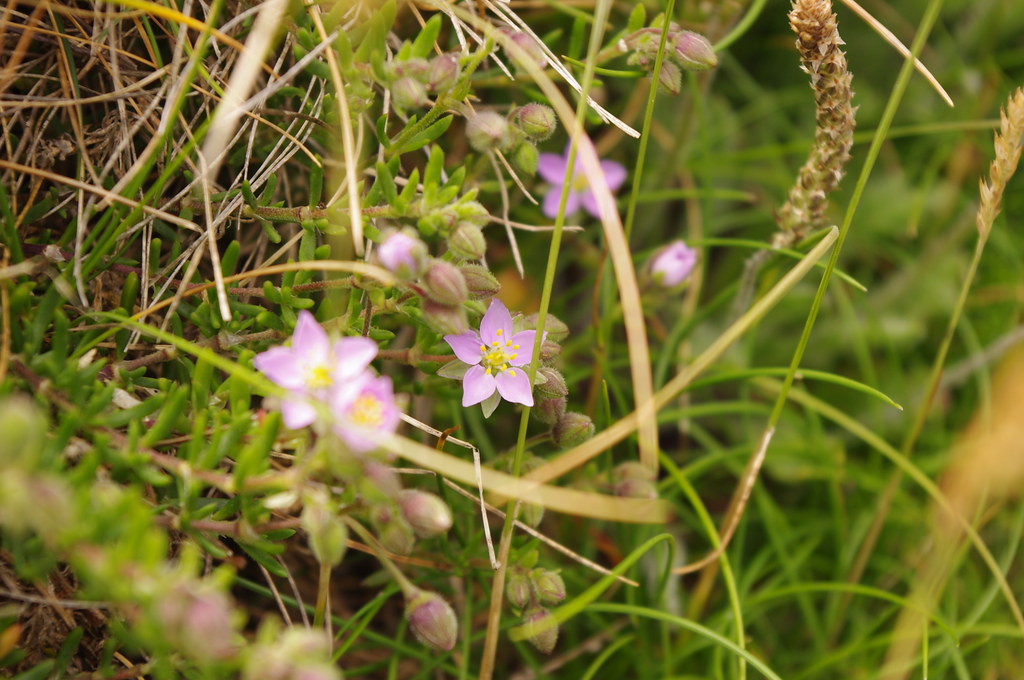 |
| Rock sea-spurrey |
Out of necessity, there are certain key species that most of us will learn as children. These vary from region to region and generally fall into two categories: things that are bad and can hurt you, and things that are good and may even be useful in some way. In Appalachia, the "bad" species include poison ivy, black widow spiders, copperhead snakes, and yellow jackets. "Good" species are things like yellow woodsorrel ("sourgrass"), raspberries, American robins, and white-tailed deer. Beyond this, it's really up to you to do the legwork and expand your horizons.
This can be accomplished alone, but having a partner (or partners) in crime can really be helpful...which brings me to the point of this post. I've now been living in the UK for four years (!), and I have been slowly but surely learning new species along the way--an achievement that helps me feel more and more at home here. (Just as most people feel more comfortable when they are surrounded by familiar faces, I am most relaxed when I know my habitat.) However, I've reached a bit of a plateau, both because I keep visiting the same spots again and again, and also because, I admit, I have limited knowledge and abilities. At this point, if I want to improve, I need to travel, and I need to start conferring with others.
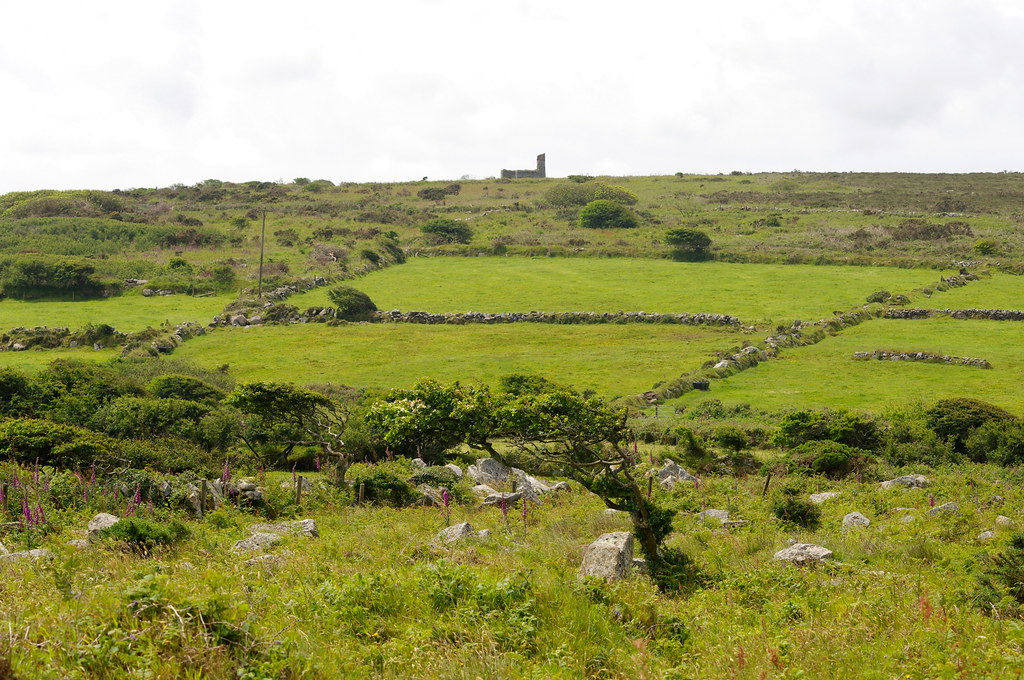 |
| An old tin mining facility sits on a hilltop above Bodrifty |
Last week, I achieved both of these goals by going on a local adventure with friend, former colleague, and former student
Amanda Scott. Like me, Amanda is a transplant here in Cornwall, but she is probably more enthusiastic about local culture and wildlife than many of the natives are; she travels around the county in order to explore all that it has to offer so that she can provide descriptions and recommendations on her blog. She invited me to accompany her on an expedition to Bodrifty, site of an Iron Age settlement dating to somewhere between the 4th and 7th centuries BCE.
In its heyday, Bodrifty comprised eight stone roundhouses, the remnants of which can still clearly be seen at the site. The area was excavated in the 1950s, yielding a haul of pottery shards that are now housed in the Royal Cornwall Museum (Truro). It is fascinating to walk through the ruins and note the tininess of all the buildings and imagine what the area would have been like 2,500 years ago. Because Bodrifty is undeniably rural (despite being only three miles from Penzance), it was noticeably calm and peaceful; during our entire visit, the only sounds Amanda and I could hear were insects, birds (including a distant cuckoo), and, of course, wind.
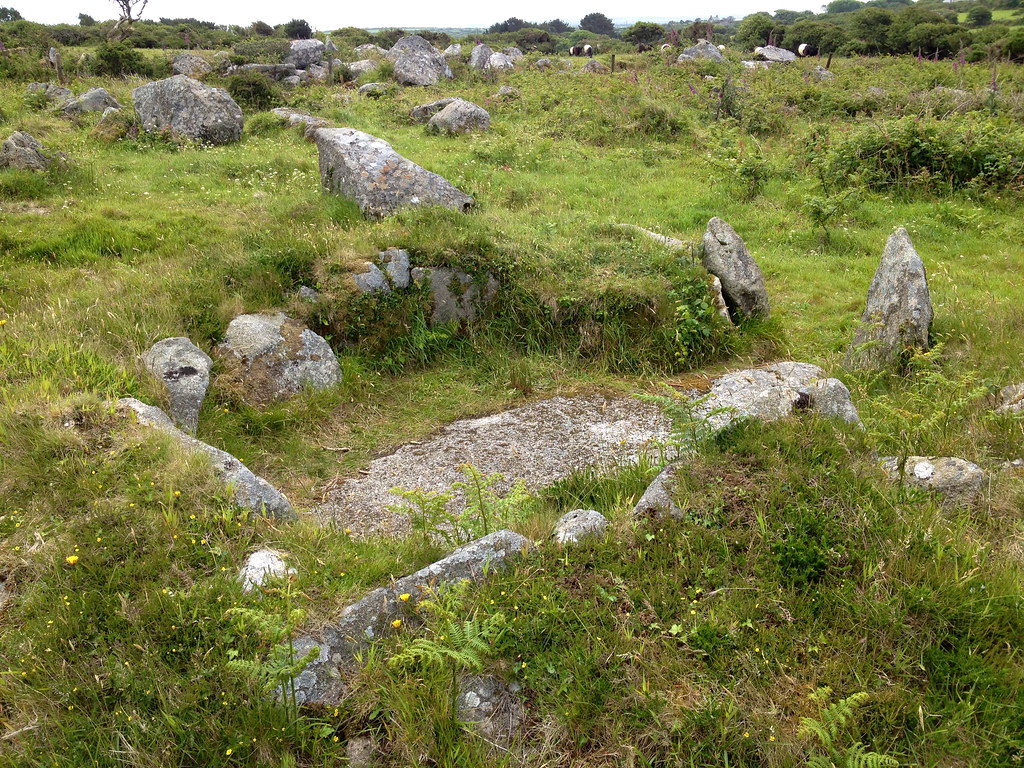 |
| Remnants of a small roundhouse at Bodrifty |
Bodrifty is by no means exciting, but it was very pleasant and relaxing, and chock full of wildlife--which, of course, is one of the main reasons why Amanda and I had gone there. Within just a couple minutes of exiting the car, we had already stumbled across species I'd never before seen. Amanda is very knowledgeable about plants, and for some reason my memory is better when I learn from people rather than books, so it was a match made in heaven; I was able to add several new wildflowers to my repertoire.
 |
| Milkwort (we saw both common and heath, and I am not sure which one is shown here because I can't see the distinguishing feature in the photograph; sorry, botanists!) |
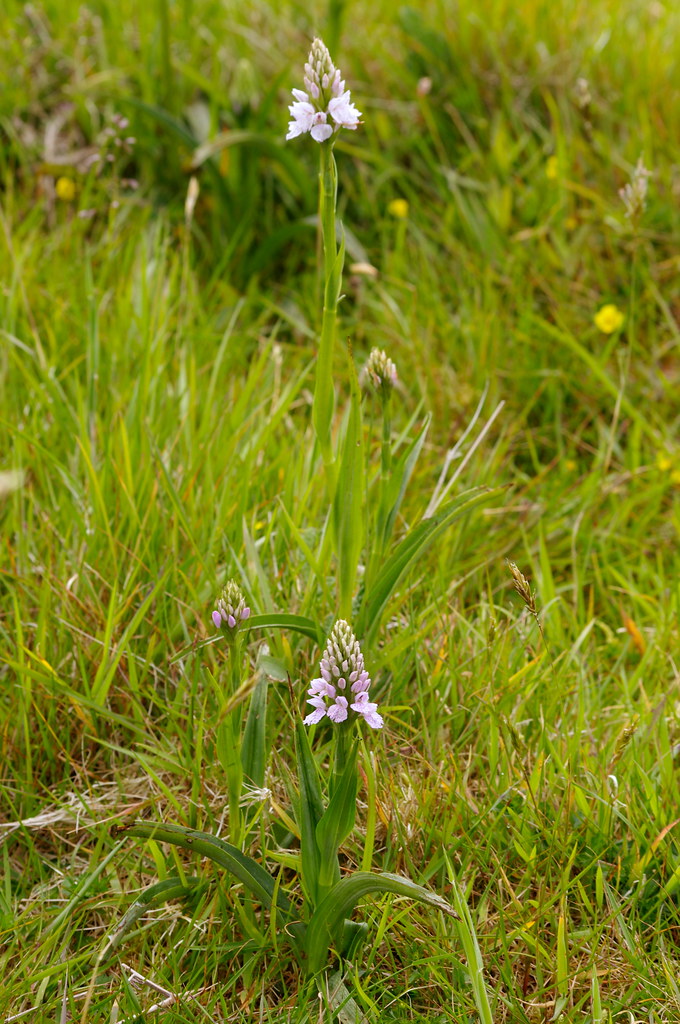 |
| Heath spotted-orchid, trying its best to confuse us by not having spots on some of its leaves |
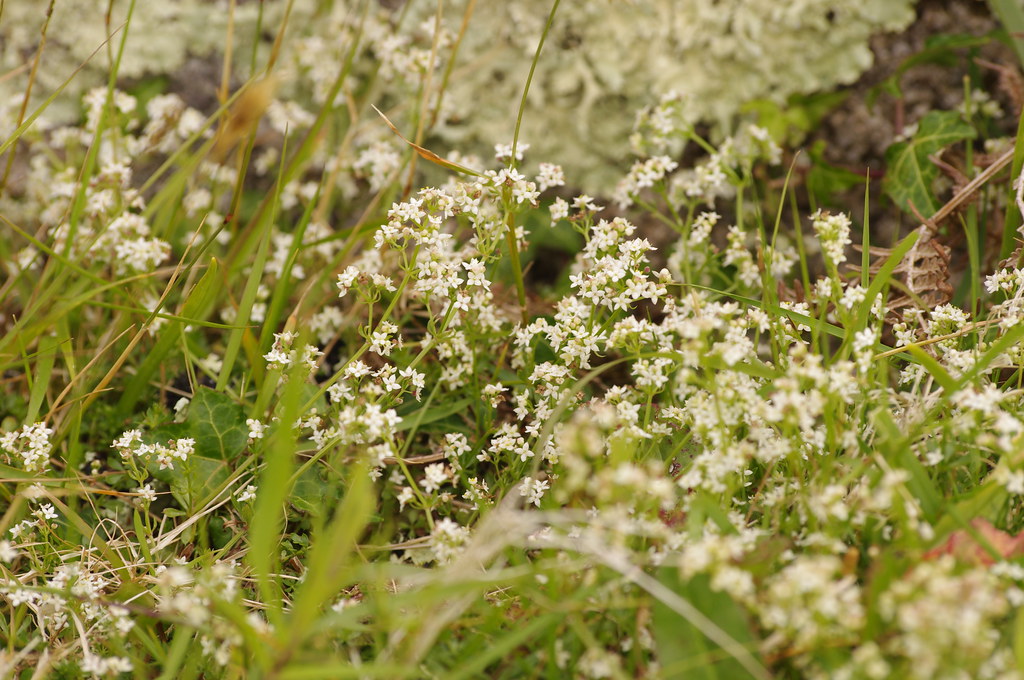 |
| Bedstraws. I'm not sure what kind because these all look pretty similar, and there are several different species to choose from. I'll be able to tell them apart some day, I promise! |
We also discovered a pond, which not only yielded a new species of plant, but also our only amphibians of the day:
 |
| Tadpoles! |
Can you believe that I was
twenty-five years old when I saw my first tadpoles in the wild? I still find them absolutely captivating. There were hundreds in this tiny pond, and I probably could have sat and stared at them all afternoon.
Once we'd had our fill of Bodrifty, Amanda and I decided to extend our adventure by visiting another local spot. Amanda's map indicated that there were several potentially interesting destinations nearby; we chose to head almost directly north towards Treen, which has a crossroads where the Southwest Coastal Path meets a public footpath that leads out to Gurnard's Head--a tiny finger of land that juts out into the Celtic Sea.
 |
| I would happily live in either of the two houses in this photo. |
We had a fantastic view of the ocean and could clearly see the nutrient-rich currents running towards and along the shoreline. These are the sorts of areas that basking sharks love, but Amanda and I never did spot any--though it wasn't for lack of trying. We did, however, see a variety of other interesting species.
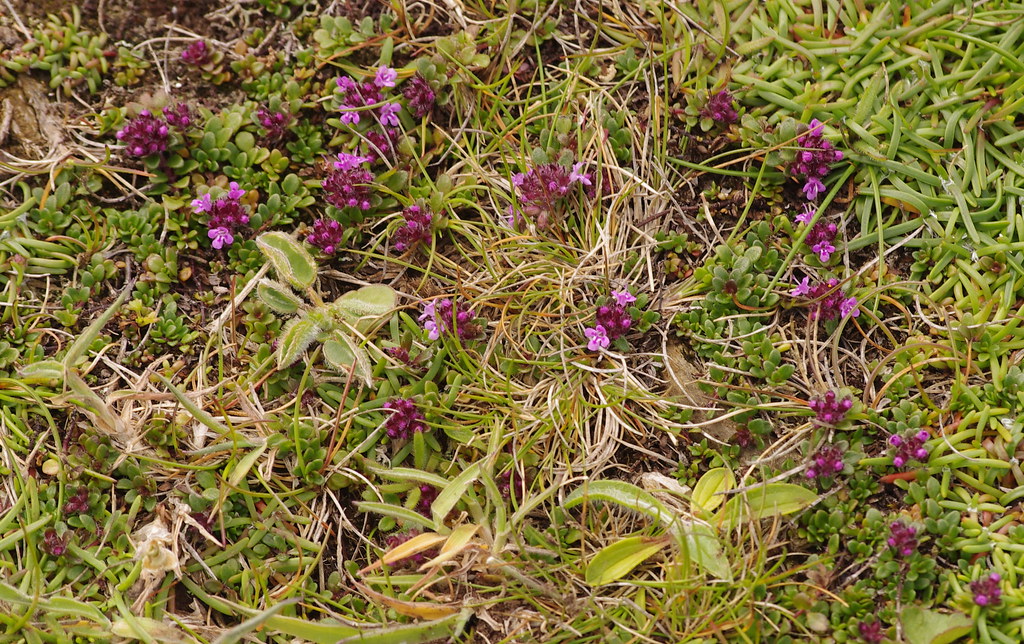 |
| Wild thyme (the pink flowers) |
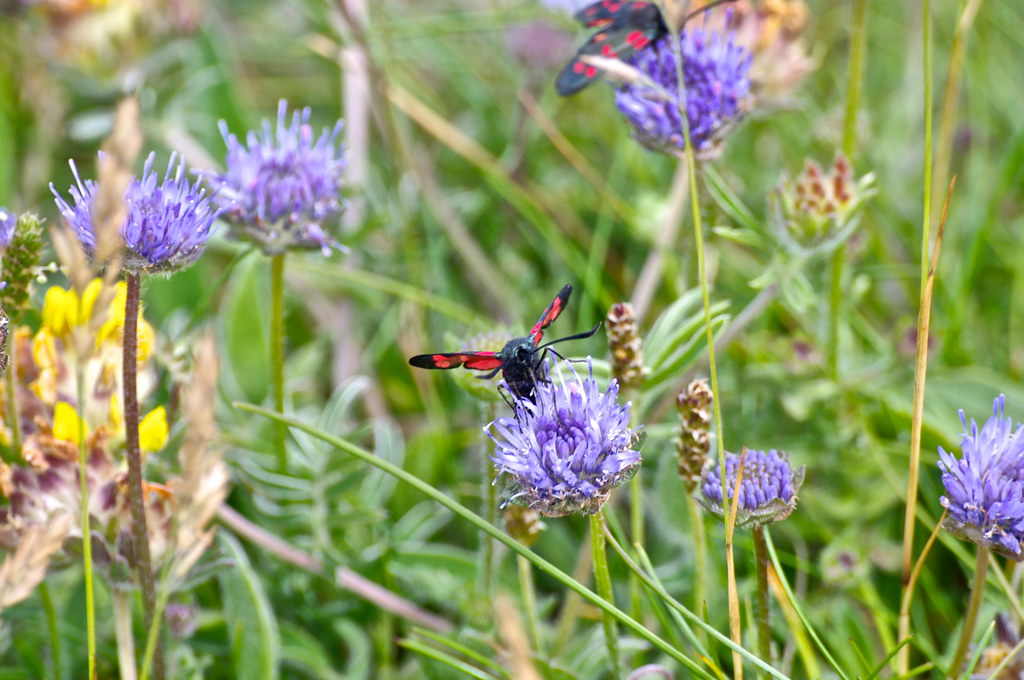 |
| Burnet moths on sheep's-bit, with some kidney vetch in the background |
 |
| Cream-spotted tiger moth on some sort of umbellifer (potentially cow parsley?). Amanda and I were later told that this was quite an exciting sighting, though we didn't realize it at the time. |
Once we reached the head, Amanda and I found a nice spot of soft grass to sit on while we enjoyed our picnic lunches. The skies cleared as we ate, and soon we were basking in sunlight and reveling in the amazing colors of a Cornish summer. Overhead, peregrine falcons, northern gannets, kittiwakes, and fulmars added to the show. All in all, it was pretty spectacular, and it was with great reluctance that we finally headed back up the hill to begin the journey home.
Given the loveliness of the ruins, the diversity of species encountered, the beauty of the sunny afternoon, and the pleasure of good conversation, I'd say the day was a success. Thanks again to Amanda for inviting me along, and here's hoping that I get to poach some more of her knowledge on another trip in the near future!
 |
| The farewell committee at the public footpath |












Happy memories of a great day! PS. Sorry it's taken me a while to leave a comment, after enjoying our adventures together a couple of weeks ago - I stopped being able to leave comments on Blogger accounts for some reason, but I've sorted it now. Amanda
ReplyDelete